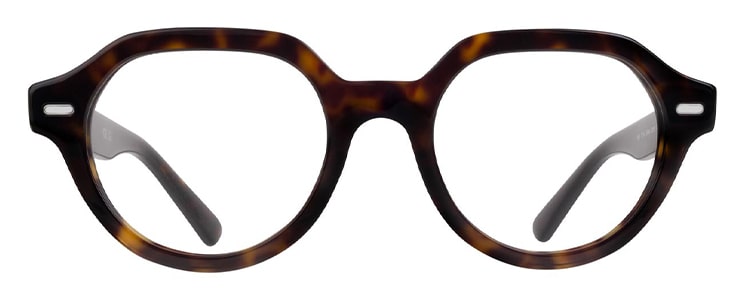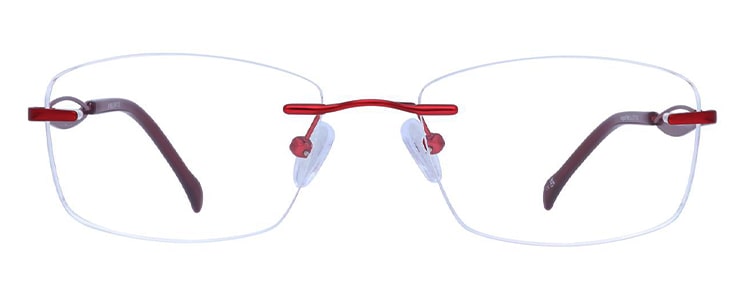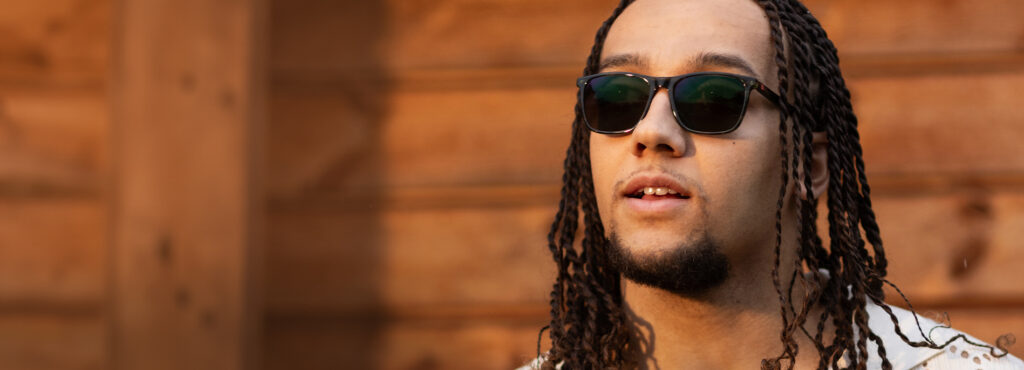Do you have a pair of baby blues? Admired for their beauty, blue eyes have long been a coveted colour. Seen as angelic and trustworthy, blue is actually the second most common eye colour across the globe. Find out the truth behind this charming hue as we delve further into its origins.
How do blue eyes get their colour?
The colour of your eyes depends on the amount of melanin produced within the front part of your eye. Melanin is a brown pigment that also determines the colour of your hair and skin.
Your iris has two layers. For a majority of people, the back layer of your eyes has brown pigment in it. In between that is the stroma, a transparent tissue filled with several proteins, including collagen. Blue eyes have no pigment in the front layer which means the collagen fibres in the eye scatter and absorb longer wavelengths of light. More blue light is reflected back out, making the eyes look blue in colour. It works the same way as a blue sky which is caused by the scientific phenomenon known as the Rayleigh scattering. The truth is, blue eyes are actually completely colourless.
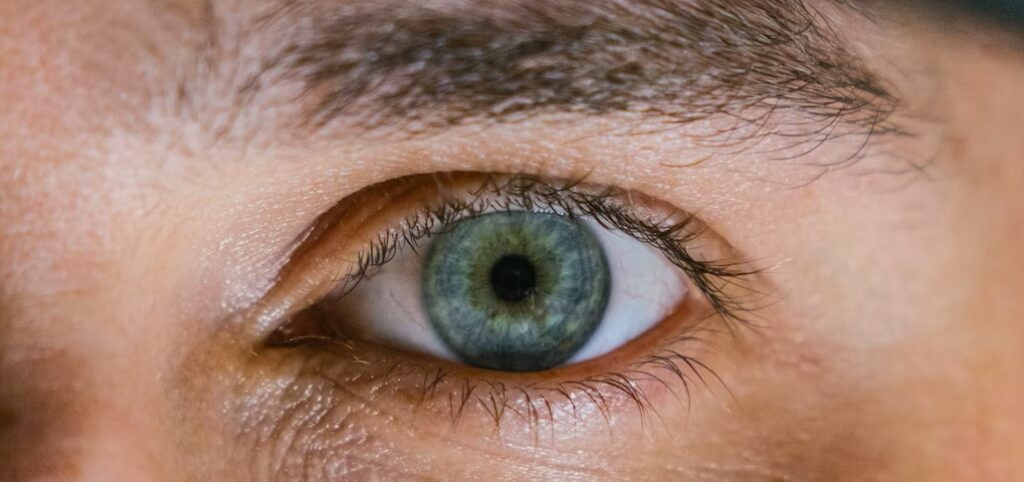
What are the different shades of blue eyes?
Just like any other colour, your eyes can vary from light blue to dark. Some people have violet eyes, pale blue or bluey-green eyes while others appear to have bright blue. In some cases, you can even have hazel-blue eyes. This is possible because hazel eyes have varying amounts of melanin in different areas of the eye. This is why some parts of hazel eyes look brown, or even amber, green or blue.
Colour variations are as much to do with the amount of melanin present in the iris as it is a result of the Rayleigh scattering.
Blue vs grey eyes
Blue eyes are not to be mistaken for grey. Grey eyes are one of the rarest eye colours and differ in appearance. As mentioned previously, there are two layers to the iris of your eye, the front and back. In the middle is the stroma which is a clear tissue containing proteins, one of which is collagen. Grey eyes naturally have more collagen which reflects light and makes the eyes look a grey colour.
How do you inherit blue eyes?
It was previously thought that eye colour was a very basic genetic trait that was passed down directly from your parents. The truth is, we now understand that it is determined by several different genes.
For a child to end up with blue eyes, both parents would need to pass along the gene. They wouldn’t necessarily have to have the eye colour themselves, however, they could simply carry the gene, as long as it was recessive. Despite this, the likelihood of two blue-eyed parents having a baby with this eye colour is still very likely.
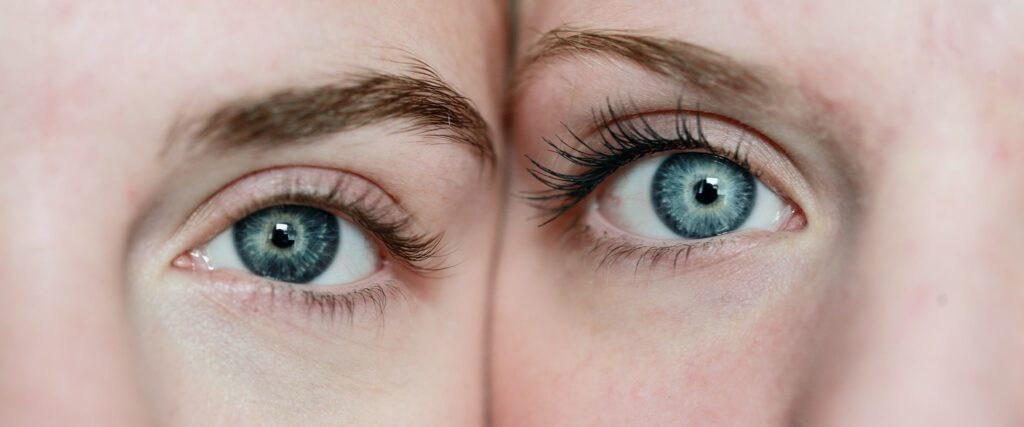
Are all blue-eyed people related?
All individuals with blue eyes might have an ancestor in common. Hard to believe right? Well, according to researchers at the University of Copenhagen, the colour didn’t even exist as an eye colour 10,000 years ago. It is believed that a mutation in one single person from south-eastern Europe caused the development of this eye colour. The colour was obviously unique and likely seen as an attractive quality. This genetic mutation would then have been passed down to the children and the trait would then appear in later generations. These ancestors likely relocated, spreading the mutation around different parts of the world.
If this theory is correct, that would therefore mean that every person with blue eyes is actually related!
Are all babies born with blue eyes?
Many people believe that all babies are born with light-coloured eyes. This is in fact a complete myth! Genetics play the biggest role in eye colour and brown is actually also very common in newborns. Eye colour varies in babies, just like it does in adults. As humans, when we are born, our eyes are still yet to develop the full amount of pigment and so because of this, they can change colour during the early stages of childhood as more melanin is produced in the iris.
Are people with blue eyes more prone to health risks?
While you cannot predict the outcome of your health or vision quality, some studies do suggest health risks can be linked to eye colour.
Melanin is thought to protect the back of the eye from being damaged by UV light and High Energy Visible (HEV) blue light. As you know, people with blue eyes have less melanin pigment present in the front layer of their iris. This means that they have a greater chance of being more sensitive to light and therefore more susceptible to sun damage caused by UV rays. Overexposure to the sun can put you at risk of eye conditions such as age-related macular degeneration (AMD), which can lead to sight loss. Blue-eyed people are far more likely to develop AMD. For this reason, we recommend that if you’re someone with this eye colour, you make sure you are extra cautious and wear the appropriate eyewear at all times. It’s particularly important that you wear sunglasses with 100% UVA/B protection.
At Glasses Direct, we have a range of sunglasses tints which are designed for various purposes. They all provide reliable 100% UVA/B protection. You can choose from either dark tints, gradient tints, or polarised lenses. You also have the option of our light intelligent lenses which conveniently transform from clear glasses indoors to a pair of stylish sunglasses when you go outside.
Always remember that whatever your eye colour, it’s still important to take care of and prioritise your eye health. You must also make sure that you book regular eye tests. This will not only ensure your prescription is correct but can help detect early signs of any eye or health conditions.
What colour glasses suit my eyes?
Blue eyes are naturally complemented by blue, grey and silver. Glasses in these colours are your best choice. If you want to subtly draw attention to your eyes then we would recommend you try a sleek black or dark tortoiseshell frame. Meanwhile, if you’re feeling confident then a pair of bright orange or red glasses will provide an eye-catching contrast and make your eyes pop!



